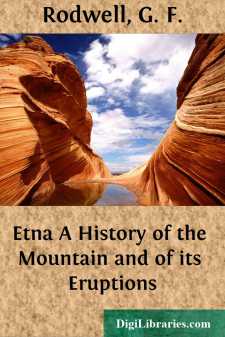Categories
- Antiques & Collectibles 13
- Architecture 36
- Art 48
- Bibles 22
- Biography & Autobiography 813
- Body, Mind & Spirit 142
- Business & Economics 28
- Children's Books 17
- Children's Fiction 14
- Computers 4
- Cooking 94
- Crafts & Hobbies 4
- Drama 346
- Education 46
- Family & Relationships 57
- Fiction 11829
- Games 19
- Gardening 17
- Health & Fitness 34
- History 1377
- House & Home 1
- Humor 147
- Juvenile Fiction 1873
- Juvenile Nonfiction 202
- Language Arts & Disciplines 88
- Law 16
- Literary Collections 686
- Literary Criticism 179
- Mathematics 13
- Medical 41
- Music 40
- Nature 179
- Non-Classifiable 1768
- Performing Arts 7
- Periodicals 1453
- Philosophy 64
- Photography 2
- Poetry 896
- Political Science 203
- Psychology 42
- Reference 154
- Religion 513
- Science 126
- Self-Help 84
- Social Science 81
- Sports & Recreation 34
- Study Aids 3
- Technology & Engineering 59
- Transportation 23
- Travel 463
- True Crime 29
Etna A History of the Mountain and of its Eruptions
by: G. F. Rodwell
Description:
Excerpt
CHAPTER I.
The principal mountain chain of Sicily skirts the North and a portion of the North-eastern coast, and would appear to be a prolongation of the Apennines. An inferior group passes through the centre of the island, diverging towards the South, as it approaches the East coast. Between the two ranges, and completely separated from them by the valleys of the Alcantara and the Simeto, stands the mighty mass of Mount Etna, which rises in solitary grandeur from the eastern sea-board of the island. Volcanoes, by the very mode of their formation, are frequently completely isolated; and, if they are of any magnitude, they thus acquire an imposing contour and a majesty, which larger mountains, forming parts of a chain, do not possess. This specially applies to Etna. "Cœlebs degit," says Cardinal Bembo, "et nullius montis dignata conjugium, caste intra suos terminos continetur." It is not alone the conspicuous appearance of the mountain which has made it the most famous volcano either of ancient or modern times:—the number and violence of its eruptions, the extent of its lava streams, its association with antiquity, and its history prolonged over more than 2400 years, have all tended to make it celebrated.
The geographical position of Etna was first accurately determined by Captain Smyth in 1814. He estimated the latitude of the highest point of the bifid peak of the great crater at 37° 43' 31" N.; and the longitude at 15° East of Greenwich. Elie de Beaumont repeated the observations in 1834 with nearly the same result; and these determinations have been very generally adopted. In the new Italian map recently constructed by the Stato Maggiore, the latitude of the centre of the crater is stated to be 37° 44' 55" N., and the longitude 44' 55" E. of the meridian of Naples, which passes through the Observatory of Capo di Monte.
According to Bochart the name of Etna is derived from the Phœnician athana—a furnace; others derive it from αι′θω—to burn. Professor Benfey of Gottingen, a great authority on the subject, considers that the word was created by one of the early Indo-Germanic races. He identifies the root ait with the Greek αι′θ and the Latin aed—to burn, as in aes-tu. The Greek name Αιτνα was known to Hesiod. The more modern name, Mongibello, by which the mountain is still commonly known to the Sicilians, is a combination of the Arabic Gibel, and the Italian Monte. During the Saracenic occupation of Sicily, Etna was called Gibel Uttamat—the mountain of fire; and the last syllables of Mongibello are a relic of the Saracenic name. A mountain near Palermo is still called Gibel Rosso—the red mountain; and names may not unfrequently be found in the immediate neighbourhood of Etna which are partly, or sometimes even entirely, composed of Arabic words; such, for example, as Alcantara—the river of the bridge. Etna is also often spoken of distinctively as Il Monte—the mountain par excellence; a name which, in its capacity of the largest mountain in the kingdom of Italy, and the loftiest volcano in Europe, it fully justifies.
Etna is frequently alluded to by classical writers. By the poets it was sometimes feigned to be the prison of the giant Enceladus or Typhon, sometimes the forge of Hephaistos, and the abode of the Cyclops.
It is strange that Homer, who has so minutely described certain portions of the contiguous Sicilian coast, does not allude to Etna....


